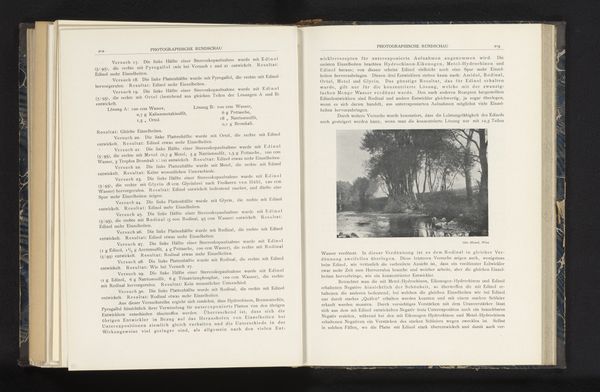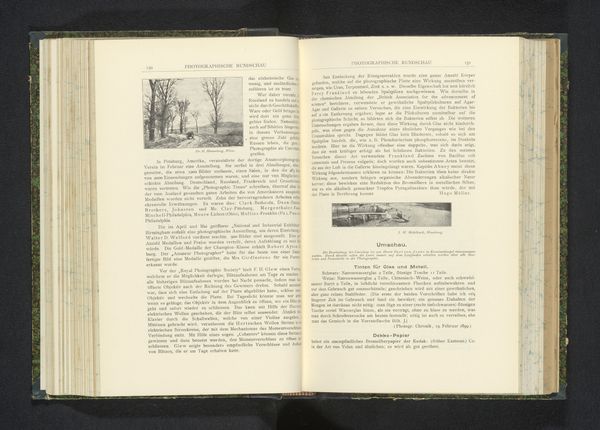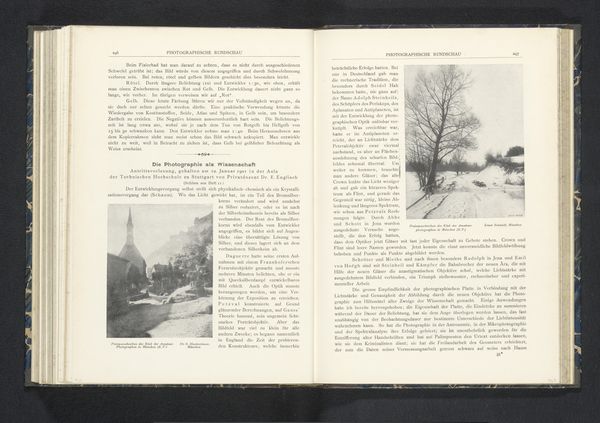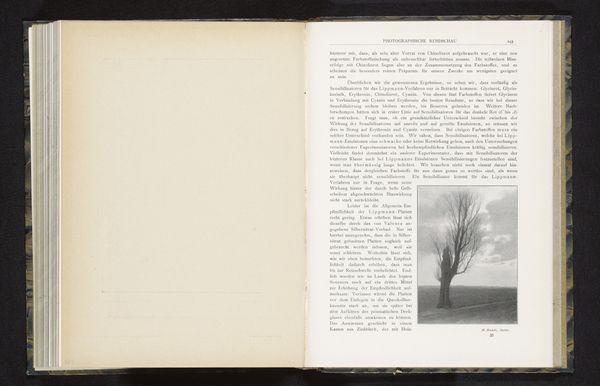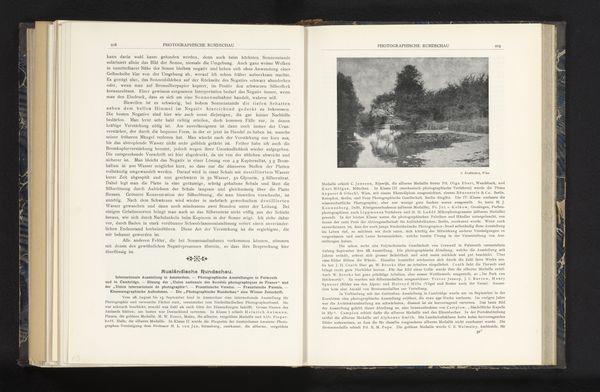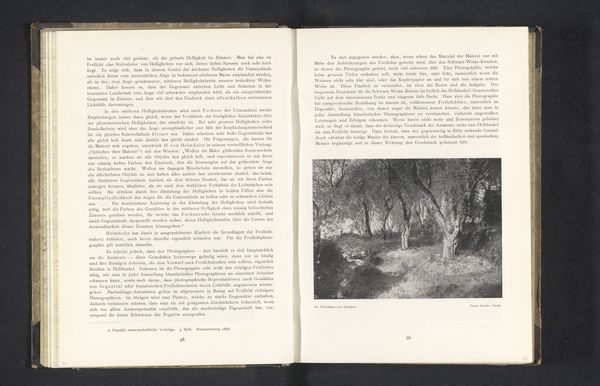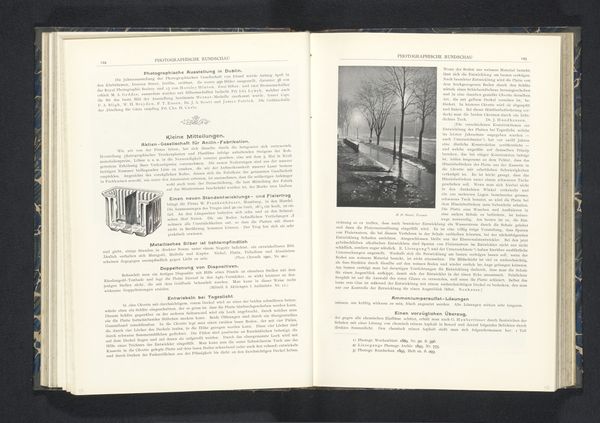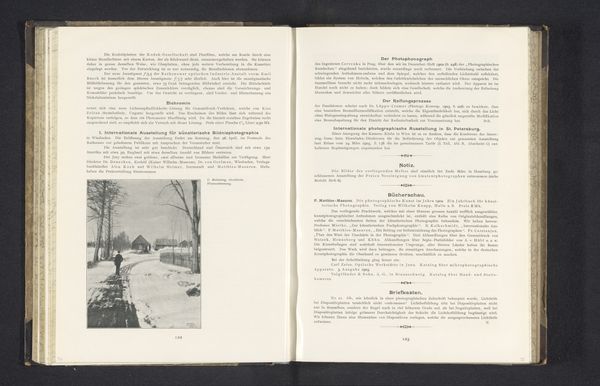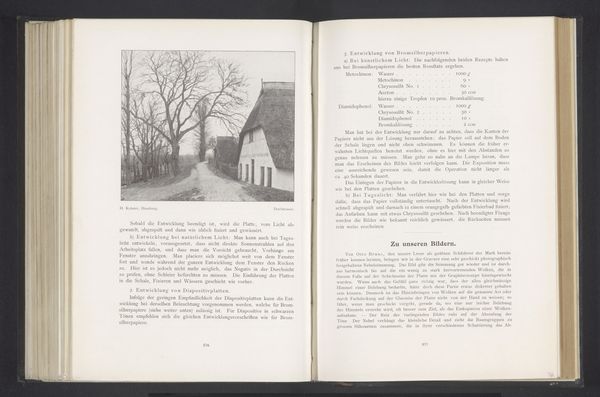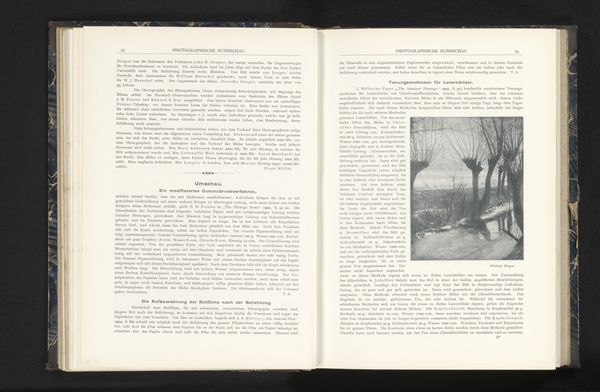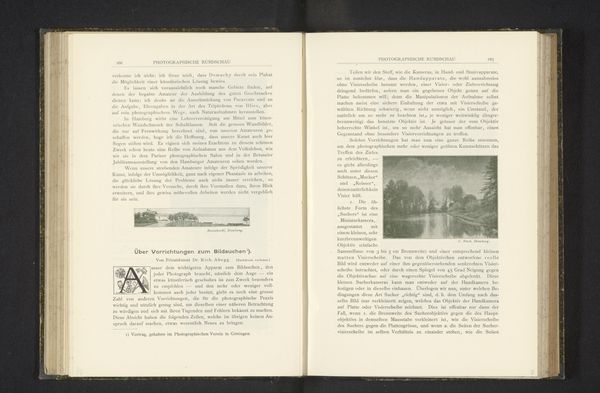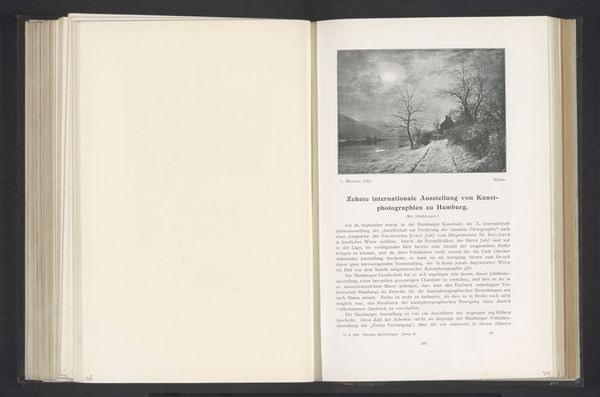
print, textile, paper, photography, gelatin-silver-print
#
still-life
# print
#
landscape
#
textile
#
paper
#
photography
#
gelatin-silver-print
Dimensions: height 116 mm, width 80 mm
Copyright: Rijks Museum: Open Domain
Curator: Here, we're looking at a photograph featured in a book, attributed to Ed. Enk. It's titled "Winters landschap" and dates to before 1901. The medium is gelatin silver print on paper, but there is also the strong texture of the book around it. Editor: My first thought is bleak beauty. The limited palette and stark composition create a wonderfully subdued atmosphere, very contemplative and lonely. The water almost has a frozen presence on the image Curator: The landscape genre held certain cultural expectations, particularly around ideas of nationhood, nature, and the sublime. I wonder, looking at this photograph from the turn of the century, if that artistic context gave it some weight regarding this still image. What cultural attitudes do you think it invokes about nature? Editor: Certainly the romantic sublime factors in. Those silhouetted trees along the horizon almost reach up. It also presents a familiar motif in Northern European art - the contrast between a seemingly untamed nature and quiet desolation. It taps into archetypal feelings linked to winter - introspection, waiting for nature's cycle to continue, or perhaps in a time of rising industrialization, the calm refuge that could be found there. Curator: I find myself thinking about access and representation. Photography during this era was becoming more democratized but still required specialized knowledge. Its use in a book signifies an attempt to broadly share this vision, yet its circulation would have been restricted by literacy and economics. In what ways might the symbolism portrayed been seen or taken up within cultural imagery to enforce national character? Editor: This depiction echoes common themes: the solitary figure braving a harsh environment or the village nestled amidst a wild landscape, so yes, that can become strongly national, to show the hardiness of the people who call it home. Consider how often similar scenes appeared in folklore or national art - its emotional weight grew stronger with repetition. Curator: That’s such an interesting interpretation and contrast with this book featuring it. Thinking through this piece is valuable, it seems, both to reflect and consider photographic methods across classes in the beginning of the 20th century. Editor: Exactly, tracing back from these elemental winter images to something both culturally present and deeply embedded.
Comments
No comments
Be the first to comment and join the conversation on the ultimate creative platform.
